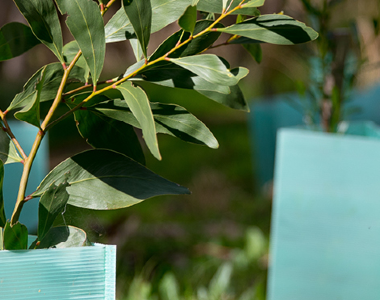
Reducing emissions
We commit to reducing emissions.
International scientific consensus links climate change with greenhouse gas (GHG) emissions and the dairy industry has a responsibility to reduce its emissions in both the farm and manufacturing sectors. Through the Australian Dairy Industry Sustainability Framework, we've set a 2030 goal to reduce GHG emissions intensity by 30%.
Learn more about climate change and the dairy initiatives helping to drive down emissions.
Climate change and Australian dairy
What does climate change action look like on a dairy farm?
Climate change is a key sustainability risk for dairy. Modelling suggests that climate change will increase the frequency of extreme weather events and also change climate zones across dairy regions. Impacts including water scarcity will affect milk supply and the viability of the industry in some regions.
Dairy businesses are already taking action against climate change, including on farm. This infographic demonstrates some of the transformations that dairy farmers are implementing on their farm now to address climate change.
UN Sustainable Development Goal 13 - Climate Action
The commitments in the Australian Dairy Industry Sustainability Framework align with the United Nations Sustainable Development Goals and have the same 2030 time horizon.
Sustainable Development Goal 13 about climate action focuses on the need for urgent action to combat climate change and its impacts.
In an effort to reduce greenhouse gas (GHG) emissions and climate impact, Australian dairy has a clear goal to reduce GHG emissions intensity by 30% by 2030.
Learn more about Goal 13 of the SDGs here.
Industry progress on emissions reduction
According to the 2020 Australian Dairy Industry Sustainability Report, 94% of Australian dairy farmers have implemented practices on their farms to reduce or offset their GHG emissions and dairy manufacturers have reduced their GHG emissions intensity by 23.5% since 2010/11.
Articles
ABC
David Vonhoff describes some of the changes he has introduced to tackle climate change on his 1500-acre farm in Queensland’s Darling Downs region.
Dairy farmer uses multi-species, legumes and charcoal to combat climate change
Latest research
Dairy in a low emissions diet
CSIRO researchers plotted the nutritional quality of Australians diets against dietary impact on emissions and found that high-quality, low-emissions diets typically featured dairy as a key component.
Should I eat more or less dairy if I want a low emission diet?
Industry initiatives
Dairy Australia's Climate Change Strategy
Dairy Australia is committed to playing its part in ensuring a healthy climate through a new Climate Change Strategy 2020-25, released in 2020.
Dairy Australia and the wider industry will work on-farm, in manufacturing and in distribution to find and enable smart, sustainable and cost-effective solutions to meet dairy farmer's adaptation challenges as well as industry targets for reducing greenhouse gas emissions.
Dairy SmartFarm strives for world first
Professor Joe Jacobs from Australia’s leading dairy innovation facility Ellinbank, speaks about their goal to become the world’s first carbon-neutral dairy farm by 2026. Dairy farmers across the country also share how they’re reducing emissions on-farm in this latest video.
Case studies
Solar energy
Beston Global Foods have embraced solar in what's been described as a trailblazing renewable energy move. Read their story here.
Dairy companies set carbon aims
Australia’s major milk processors are setting carbon emission targets showing how important sustainability is for the sector. Read more here.
Sustainability across the Australian dairy industry
Read the latest Australian Dairy Industry Sustainability Report to see how we're making progress against all our goals and targets.


